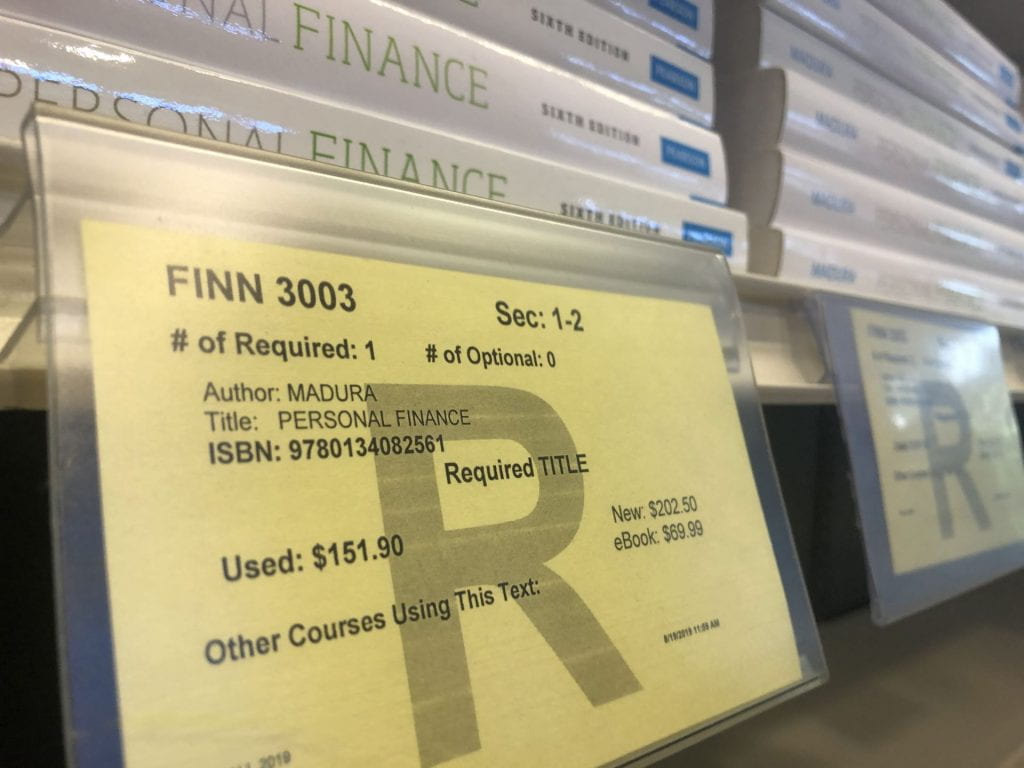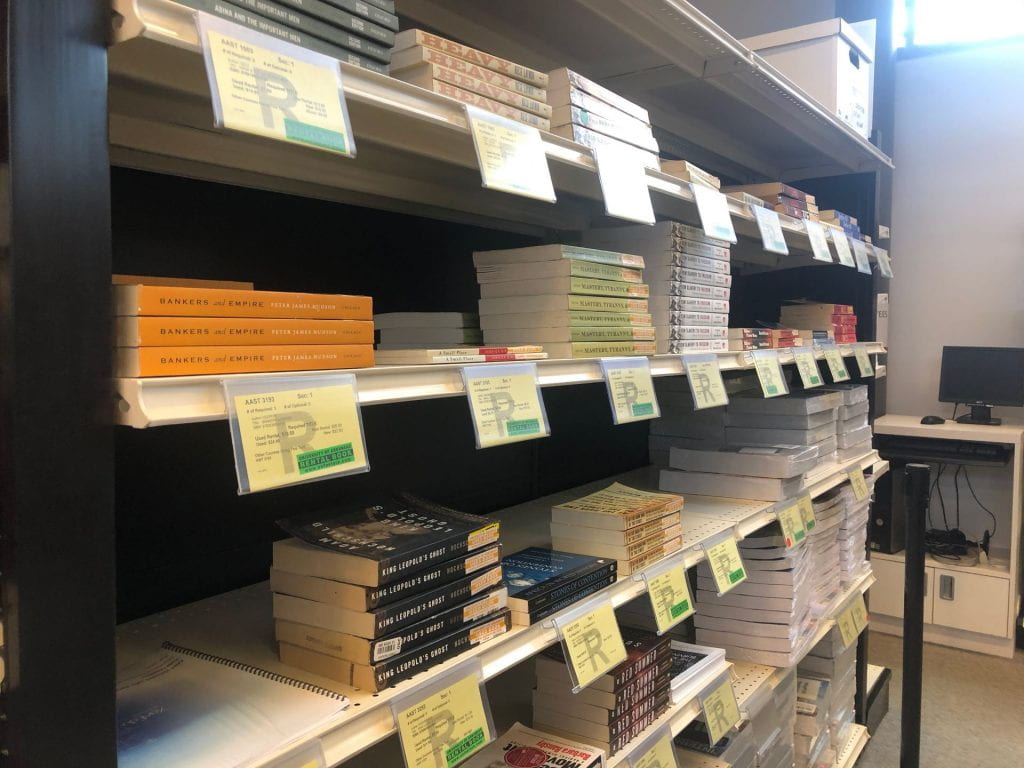Library, Global Campus Working to Reduce Textbook Costs
With college textbook costs on the rise, a UA program is promoting digital materials in place of physical textbooks in order to reduce costs for students.

The Library and Global Campus are working together to reduce textbook costs by giving students access to digital materials that are adopted, adapted or created by faculty.
The materials, known as Open Educational Resources, or OERs, are openly licensed educational materials, according to the library’s website. Students get access at a free or minimal cost to online materials, like books or articles.
“What’s great about open educational resources is that you can create a textbook and license it under a creative commons license and anyone can use it for free, or for a small fee,” said Kelsey Lovewell, public relations director. “So, we have a program that incentivizes faculty across campus to adopt, adapt, or create their own open educational resources, and the goal for that is that their students won’t have to pay for textbooks, or if they do, the cost will be nominal.”
A Massachusetts community college uses open-access books in three of the six required general education courses. Students spent as little as $31 for three courses, as opposed to the national average of $153 per course, according to CBS Moneywatch.
Students on average spend $1,200 annually on books and supplies, according to The College Board.
“I’ve always been frustrated with the texts that I use in my class, much less the texts that are available out there in the world, mostly because of their cost,” said Russell L. Sharman, an Assistant Professor of Communication, who is creating his own OER. “I have 200 students per section in that class, and I teach two sections a semester, so I have 400 students paying up to $100 each, which often means they don’t buy the book at all and hope they can just skate by. That completely disrupts my approach to the course.”
The opportunity to save money is a driving force behind OERs. In the 2018-2019 school year, OERs saved students an estimated $162,000, up from just $11,900 saved the year prior, according to the Mullins Library Open Educational Resources Savings Report.
Textbook costs rose 88 percent in 10 years, according to a study by the Bureau of Labor Statistics. Students must decide on whether to buy a textbook they might never use or save the money, said Jared Pinkerton, Associated Student Government President.
“[Students] hurt themselves because they can’t afford to buy a textbook that costs as much as a gold bar,” Pinkerton said. “Education needs to be equitable, and open education resources is a push for equity in textbooks, and that’s important.”

The concept of reduced-cost textbooks has benefited both students and the UofA, Pinkerton said. While students also pay less for their textbooks, a proposed $10 fee for using open educational resources would support grants and fund the department that is using the OERs.
“That way, every dollar of these OERs is literally being put to benefit the students,” Pinkerton said.
“There’s some stigma around free, right, that free is lesser for some reason, in [faculty] eyes. It comes to talking them into it and showing them how much of an impact it can have on students.”
Most OERs are digital textbooks that can be downloaded and printed, increasing accessibility to the material, said Elaine Thornton, the Open Education and Distance Learning Librarian. Material access will not end with the end of term, Thornton said, allowing students to continue to learn past their enrollment in the class.
“If a class adopts an OER, everyone gets it automatically online, for free, [and] always will be free. The faculty can use it, they can change it,” Thornton said.
In some cases, a physical textbook hinders students’ learning, Sharman said. Sharman is creating a digital textbook for introduction to film lecture courses to increase students’ accessibility and interaction with the material, Sharman said.
“It became pretty obvious to me, not only that this made sense for this course because it would be free, but the course content is rooted in motion pictures, which a two-dimensional text or book can’t really approximate,” Sharman said. “So being able to have integrated video, links to videos, you know, actual content that is connected to the course, is pretty exciting.”
The program has been in effect for two years. It compensates professors, dependent on whether they adopt an open educational resource, adapt materials from existing resources, or create and license a new open educational resource, Thornton said.
The compensation is used to supplement faculty for their efforts, Thornton said. University Libraries and Global Campus pay faculty from $3,000 to $7,500, in multiple phases for implementation.
“The library sees value in it in that we’re helping faculty create resources, which then go into our institutional repository, so it’s kind of a digital publishing arm of it, which is another aspect of OER,” Thornton said.
“We are providing compensation and assistance to faculty who reduce the costs of textbooks for their students by making these materials open for use by everyone,” Lovewell said.
